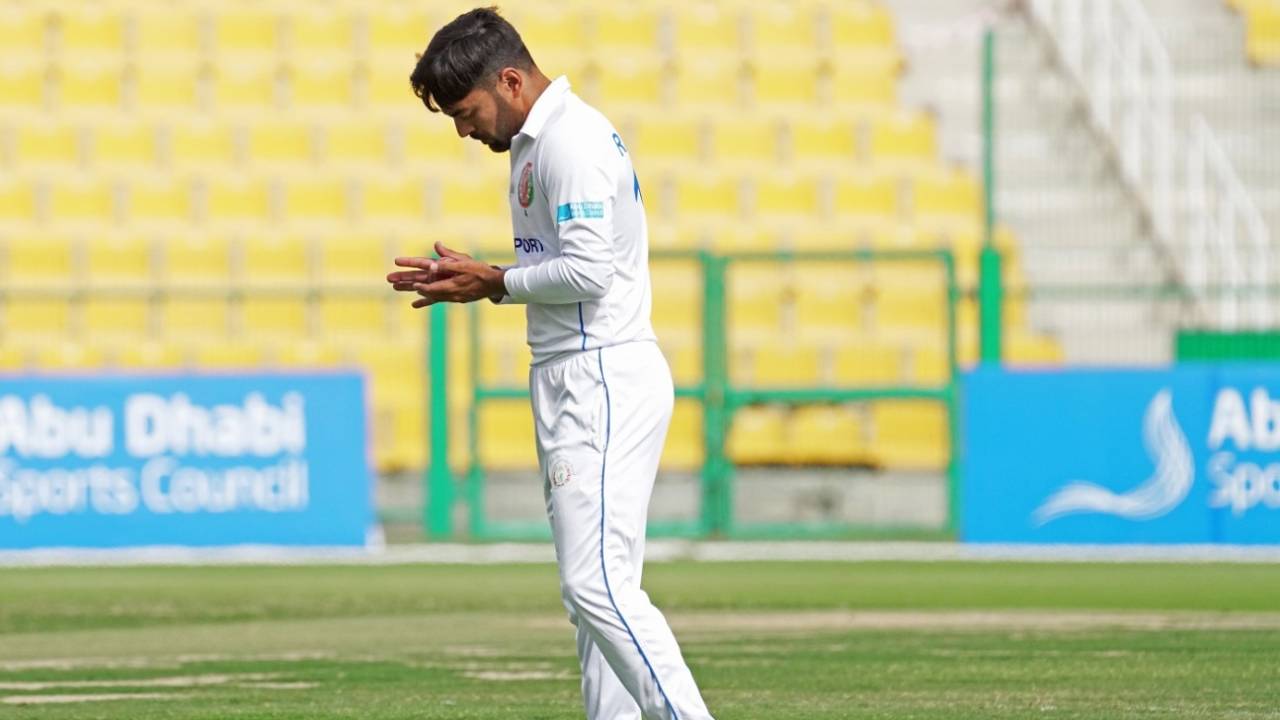Wristspinners are key in T20, but are they losing their teeth in Tests?
There's too much emphasis on variations; and the defensive mindset from short-format cricket is an obstacle as well
Ian Chappell
08-Nov-2021
Rashid Khan is a poster boy for wristspin in T20, but not quite in five-day cricket • Abu Dhabi Cricket
In addition to providing a few surprise results, the T20 World Cup has reconfirmed the crucial part wristspinners play in achieving success in the format.
Leading exponents like Adil Rashid, Rashid Khan, Adam Zampa, Tabraiz Shamsi, Shadab Khan and Ish Sodhi have been a big part of their teams' success in recent years. So important has wristspin become in T20 cricket that England - of all countries - has included allrounder Liam Livingstone in their team in order to have a second option. And this is the side of which the great Australian legspinner Bill O'Reilly wrote in his 1985 book Tiger, 60 Years of Cricket: "They have tried time and again to handicap leg-spin right out of the game."
I hate to think what the feisty O'Reilly, no admirer of 50-over cricket, would have made of the T20 format. He would be devastated that very few of the wristspinners listed above have had any major effect in the Test arena. This despite batters in general struggling mightily once the ball spins to any degree on wearing pitches.
Another great leggie, Shane Warne, has his theory on why wristspin success in T20 cricket isn't being replicated in the Test arena. He feels the main reason is that while wristspinners of yesteryear used to practise for hours perfecting a stock ball that they could land accurately under pressure, the modern leggie is encouraged to bowl a variety of deliveries so they don't become predictable in T20 cricket. Warne's summation echoes the advice O'Reilly passed on to Richie Benaud in 1953. Looking to improve his legspin skills, Benaud approached O'Reilly while on tour in England. The retired spinner told him to work assiduously on a stock delivery, a hard-spun legbreak that would keep batters under constant pressure.
Warne cites another area where the thinking of wristspinners has changed, and not necessarily for the better: the modern wristspinner would rather concede a single than a boundary. While Warne was never one to encourage boundary hits, he reasons that if that happens, at least you're bowling the next delivery to the same batter. Conceding regular singles means you're constantly facing a different batter, and Warne believes this can lead to the bowler becoming impatient. O'Reilly was never one to countenance any generosity towards his sworn enemies, and when asked if he'd ever tried to run out a player who was backing up too far, he replied: "I never encountered a batsman that keen to get to the other end."
Therein lies one of the great conundrums with the best legspinners - they are at their best when ultra-aggressive, while also remaining patient. O'Reilly and Warne both epitomised that breed.
Another problem legspinners face in pushing their claims for inclusion in a Test XI is a lack of opportunity at first-class level. On this count Australia, which used to be the great promoter of wristspin, is now no better than England. Until last season Queensland largely overlooked the skills of Mitchell Swepson, a legspinner with the credentials to succeed at Test level. When they finally played him on a regular basis, he had great success, averaging six wickets a match. In England the promising Mason Crane, what with injuries and Hampshire's reluctance to select him in first-class games, is in danger of withering on the vine. To their credit Lancashire played Matt Parkinson regularly last season and he rewarded them with a good county campaign.
Wristspinners also suffer from a lack of understanding of their art. This comes both in the form of conservative captaincy and ill-informed coaching. All spinners need nurturing but in a world where success is well rewarded, captains and coaches aren't often patient.
If a young wristspinner is prepared to employ the work ethic of O'Reilly, Warne and Benaud, and he receives the right encouragement, he'll enjoy success in all forms of the game. After all, a good wristspinner operating against leaden-footed batters is a recipe for widespread bowling success.
Former Australia captain Ian Chappell is a columnist

